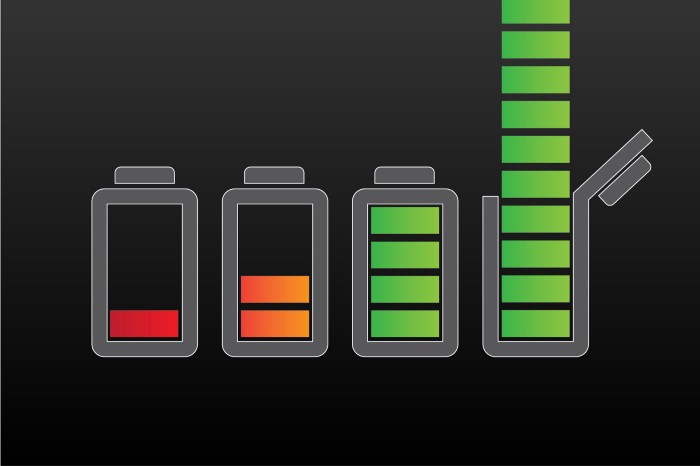🗓️ Week 03
Classifiers - Part I
DS202 Data Science for Social Scientists
10/14/22
Regression vs Classification
Classification
- We have so far only modelled quantitative responses.
- Today, we focus on predicting categorical, or qualitative, responses.
The generic supervised model:
\[ Y = \operatorname{f}(X) + \epsilon \]
still applies, only this time \(Y\) is categorical. ➡️
Our categorical variables of interest take values in an unordered set \(\mathcal{C}\), such as:
- \(\text{eye color} \in \mathcal{C} = \{\color{brown}{brown},\color{blue}{blue},\color{green}{green}\}\)
- \(\text{email} \in \mathcal{C} = \{spam, ham\}\)
- \(\text{football results} \in \mathcal{C} \{away\ win,draw,home\ win\}\)
Why can’t I use linear regression?
What if I just coded each category as a number?
\[ Y = \begin{cases} 1 &\text{if}~\color{brown}{brown},\\ 2 &\text{if}~\color{blue}{blue},\\ 3 &\text{if}~\color{green}{green}. \end{cases} \]
What could go wrong?

How would you interpret a particular prediction if your model returned:
- \(\hat{y} = ~~1.5\) or
- \(\hat{y} = ~~0.1\) or
- \(\hat{y} = 20.0\)?
More on Classification
- Often we are more interested in estimating the probabilities that \(X\) belongs to each category in \(\mathcal{C}\).
- For example, it is sometimes more valuable to have an estimate of the probability that an insurance claim is fraudulent, than a classification fraudulent or not.

- A successful gambling strategy, for instance, requires placing bets on outcomes to which you believe the bookmakers have assigned incorrect probabilities. Knowing the most likely outcome is not enough!

Note
Statistical models for ordinal response, when sets are discrete but have an order, are outside the scope of this course. Should you need to create models for ordinal variables, consult “ordinal logistic regression”. A good reference about this is (Agresti 2019, chap. 6).
Speaking of Probabilities…
Let’s talk about three possible interpretations of probability:
Classical
Frequentist
Bayesian
Events of the same kind can be reduced to a certain number of equally possible cases.
Example: coin tosses lead to either heads or tails \(1/2\) of the time ( \(50\%/50\%\))
What would be the outcome if I repeat the process many times?
Example: if I toss a coin \(1,000,000\) times, I expect \(\approx 50\%\) heads and \(\approx 50\%\) tails outcome.
What is your judgement of the likelihood of the outcome? Based on previous information.
Example: if I know that this coin has symmetric weight, I expect a \(50\%/50\%\) outcome.
Speaking of Probabilities…
For our purposes:
- Probabilities are numbers between 0 and 1
- The sum of all possible outcomes of an event must sum to 1.
- It is useful to think of things as probabilities

Note
💡 Although there is no such thing as “a probability of \(120\%\)” or “a probability of \(-23\%\)”, you could still use this language to refer to increase or decrease in an outcome.
Logistic Regression
The Logistic Regression model
Consider a binary response:
\[ Y = \begin{cases} 0 \\ 1 \end{cases} \]
We model the probability that \(Y = 1\) using the logistic function (aka. sigmoid curve):
\[ Pr(Y = 1|X) = p(X) = \frac{e^{\beta_0 + \beta_1X}}{1 + e^{\beta_0 + \beta_1 X}} \]
Source of illustration: TIBCO
The Logistic function
- Changing \(\beta_0\) while keeping \(\beta_1 = 1\):

The Logistic function (cont.)
- Keep \(\beta_0 = 0\) but vary \(\beta_1\):

Maximum likelihood estimate
As with linear regression, the coefficients are unknown and need to be estimated from training data:
\[ \hat{p}(X) = \frac{e^{\hat{\beta}_0 + \hat{\beta}_1X}}{1 + e^{\hat{\beta}_0 + \hat{\beta}_1 X}} \]
We estimate these by maximising the likelihood function:
\[ \max \ell(\beta_0, \beta_1) = \prod_{i:y_i=1}{p(x_i)} \prod_{i':y_{i'}=0} (1 - p(x_{i'})), \]
and we call this method the Maximum Likelihood Estimate (MLE).
➡️ As usual, there are multiple ways to solve this equation!
Solutions to MLE
- MLE is much more difficult to solve than the least squares formulations.
- Most solutions rely on a variant of the Hill Climbing algorithm

How do you find the latitude and longitude of a mountain peak if you can’t see very far?
- Start somewhere.
- Look around for the best way to go up.
- Go a small distance in that direction.
- Look around for the best way to go up.
- Go a small distance in that direction.
- \(\cdots\)
Advanced: If for whatever random reason, you find yourself enamored with the Maximum Likelihood Estimate, check (Agresti 2019) for a recent take on the statistical properties of this method.
Interpreting coefficients
Since we now mostly care about probabilities, how do the odds change according to features of the customers?
The concept of odds
The quantity below is called the odds:
\[ \frac{p(X)}{1 - p(X)} = e^{\beta_0 + \beta_1 X} \]
Example
If the odds are 9, then \(\frac{p(X)}{(1-p(X))} = 9 \Rightarrow p(X) = 0.9\).
This means that 9 out of 10 people will default.
Tip
How to interpret \(\beta_1\)
If X increases one unit then the odds increase by a factor of \(e^{\beta_1}\)
📝 Give it a go! Using algebra, can you re-arrange the equation for \(p(X)\) presented in the Logistic regression model slides to arrive at the odds quantity shown above?
Log odds or logit
- It is also useful to think of the odds in log terms.
\[ log\left(\frac{p(X)}{1 - p(X)}\right) = \beta_0 + \beta_1 X \]
- We call the quantity above the log odds or logit
Tip
How to interpret \(\beta_1\)
If X increases one unit then the log odds increase by \(\beta_1\)
Example: Default data
A sample of the data:
default student balance income
1 No No 729.5265 44361.625
2 No Yes 817.1804 12106.135
3 No No 1073.5492 31767.139
4 No No 529.2506 35704.494
5 No No 785.6559 38463.496
6 No Yes 919.5885 7491.559
7 No No 825.5133 24905.227
8 No Yes 808.6675 17600.451
9 No No 1161.0579 37468.529
10 No No 0.0000 29275.268
11 No Yes 0.0000 21871.073
12 No Yes 1220.5838 13268.562
13 No No 237.0451 28251.695
14 No No 606.7423 44994.556
15 No No 1112.9684 23810.174How the data is spread:
No Yes
9667 333 Min. 1st Qu. Median Mean 3rd Qu. Max.
0.0 481.7 823.6 835.4 1166.3 2654.3 Min. 1st Qu. Median Mean 3rd Qu. Max.
772 21340 34553 33517 43808 73554 No Yes
7056 2944 Who is more likely to default?

Does it matter if customer is a student?

Simple logistic regression models
- Income 💰
income_model <-
glm(default ~ income, data=ISLR2::Default, family=binomial)
cat(sprintf("beta_0 = %.5f | beta_1 = %e",
income_model$coefficients["(Intercept)"],
income_model$coefficients["income"]))beta_0 = -3.09415 | beta_1 = -8.352575e-06- Balance 💸
- Student 🧑🎓
student_model <-
glm(default ~ student, data=ISLR2::Default, family=binomial)
cat(sprintf("beta_0 = %.5f | beta_1 = %.4f",
student_model$coefficients["(Intercept)"],
student_model$coefficients["studentYes"]))beta_0 = -3.50413 | beta_1 = 0.4049Note
Logistic regression coefficients are a bit trickier to interpret when compared to those of linear regression. Let’s look at how it works ➡️
Example: Default vs Balance
- Model: Default vs Balance 💸
\[ \hat{y} = \frac{e^{-10.65133 + 0.005498917X}}{1 + e^{-10.65133 + 0.005498917X}} \]
That is:
\[ \begin{align} \hat{\beta}_0 &= -10.65133\\ \hat{\beta}_1 &= 0.005498917 \end{align} \]
Interpreting \(\hat{\beta}_0\):
- In the absence of
balanceinformation:- Log odds: \(-10.65133\)
- Odds : \(e^{-10.65133} = 2.366933 \times 10^{-5}\) \[ \begin{align} p(\text{default}=\text{Yes}) &= \frac{\text{odds}}{(1 + \text{odds})} \\ &= 2.366877 \times 10^{-5}\end{align} \]
Interpreting \(\hat{\beta}_1\):
- With
balanceinformation:- Log odds: \(0.005498917\)
- Odds : \(e^{0.005498917} = 1.005514\)
- That is, for every \(\$1\) increase in balance, the probability of default increases
Example: Default vs Income
- Model: Default vs Income 💰
\[ \hat{y} = \frac{e^{-3.094149 - 8.352575 \times 10^{-6} X}}{1 + e^{-3.094149 - 8.352575 \times 10^{-6} X}} \]
That is:
\[ \begin{align} \hat{\beta}_0 &= - 3.094149\\ \hat{\beta}_1 &= - 8.352575 \times 10^{-6} \end{align} \]
Interpreting \(\hat{\beta}_0\):
- In the absence of
balanceinformation:- Log odds: \(- 3.094149\)
- Odds : \(e^{- 3.094149} = 0.04531355\) \[ \begin{align} p(\text{default}=\text{Yes}) &= \frac{\text{odds}}{(1 + \text{odds})} \\ &= 0.04334924 = 4.33\%\end{align} \]
Interpreting \(\hat{\beta}_1\):
- With
balanceinformation:- Log odds: \(- 8.352575\)
- Odds : \(e^{- 8.352575} = 0.9999916\)
- That is, for every \(\$1\) increase in income, the probability of default decreases
Example: Default vs Is Student?
- Model: Default vs Student 🧑🎓
\[ \hat{y} = \frac{e^{-3.504128 + 0.4048871 X}}{1 + e^{-3.504128 + 0.4048871 X}} \]
That is:
\[ \begin{align} \hat{\beta}_0 &= -3.504128\\ \hat{\beta}_1 &= +0.4048871 \end{align} \]
Interpreting \(\hat{\beta}_0\):
- In the absence of
balanceinformation:- Log odds: \(-3.504128\)
- Odds : \(e^{- 3.504128} = 0.03007299\) \[ \begin{align} p(\text{default}=\text{Yes}) &= \frac{\text{odds}}{(1 + \text{odds})} \\ &= 0.02919501 \approx 2.92\%\end{align} \]
Interpreting \(\hat{\beta}_1\):
- With
balanceinformation:- Log odds: \(0.4048871\)
- Odds : \(e^{0.4048871} = 1.499133\)
- If person is a student, then the probability of default increases
Model info
The output of summary is similar to that of linear regression:
- Model: Default vs Balance 💸
Call:
glm(formula = default ~ balance, family = binomial, data = ISLR2::Default)
Deviance Residuals:
Min 1Q Median 3Q Max
-2.2697 -0.1465 -0.0589 -0.0221 3.7589
Coefficients:
Estimate Std. Error z value Pr(>|z|)
(Intercept) -1.065e+01 3.612e-01 -29.49 <2e-16 ***
balance 5.499e-03 2.204e-04 24.95 <2e-16 ***
---
Signif. codes: 0 '***' 0.001 '**' 0.01 '*' 0.05 '.' 0.1 ' ' 1
(Dispersion parameter for binomial family taken to be 1)
Null deviance: 2920.6 on 9999 degrees of freedom
Residual deviance: 1596.5 on 9998 degrees of freedom
AIC: 1600.5
Number of Fisher Scoring iterations: 8Wraping up on coefficients:
- Pay attention to the sign of the coefficient. The sign of the coefficients indicate the direction of the association.
- If the value of a predictor increases, we look at the sign of its coefficient:
- If it is a ➕ positive coefficient, we predict an increase in the probability of the class
- If it is a ➖ negative coefficient, we predict a decrease in the probability of the class
Multiple
Logistic
Regression
Multiple Logistic Regression
- It is straightforward to extend the logistic model to include multiple predictors:
\[ log \left( \frac{p(X)}{1-p(X)} \right)=\beta_0 + \beta_1 X_1 + \ldots + \beta_p X_p \]
\[ p(X) = \frac{e^{\beta_0 + \beta_1 X_1 + \ldots + \beta_p X_p}}{1 + e^{\beta_0 + \beta_1 X_1 + \ldots + \beta_p X_p}} \]
- Most things are still available (hypothesis test, confidence intervals, etc.)
- Let’s explore the output and summary of the full model ⏭️
Fitting all predictors of Default
Full Model
Call:
glm(formula = default ~ ., family = binomial, data = ISLR2::Default)
Deviance Residuals:
Min 1Q Median 3Q Max
-2.4691 -0.1418 -0.0557 -0.0203 3.7383
Coefficients:
Estimate Std. Error z value Pr(>|z|)
(Intercept) -1.087e+01 4.923e-01 -22.080 < 2e-16 ***
studentYes -6.468e-01 2.363e-01 -2.738 0.00619 **
balance 5.737e-03 2.319e-04 24.738 < 2e-16 ***
income 3.033e-06 8.203e-06 0.370 0.71152
---
Signif. codes: 0 '***' 0.001 '**' 0.01 '*' 0.05 '.' 0.1 ' ' 1
(Dispersion parameter for binomial family taken to be 1)
Null deviance: 2920.6 on 9999 degrees of freedom
Residual deviance: 1571.5 on 9996 degrees of freedom
AIC: 1579.5
Number of Fisher Scoring iterations: 8What’s Next
After our 10-min break ☕:
- Bayes’ Theorem
- The Naive Bayes algorithm
- Thresholds
- Confusion Matrix
- ROC Curve
- What will happen in our 💻 labs this week?
References

DS202 - Data Science for Social Scientists 🤖 🤹